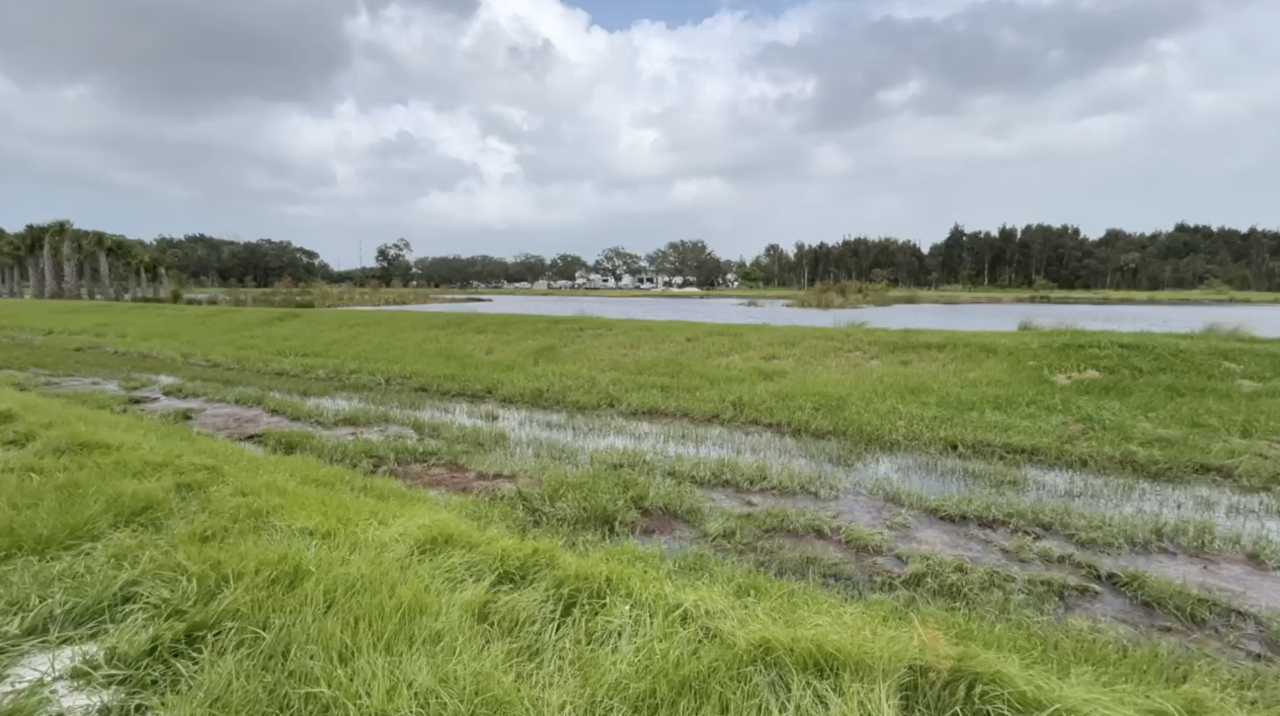ST. PETERSBURG, Fla. — In Florida, this year has been a tale of two states as far as rainfall totals, with the southeast coast deluged by sometimes-record rainfall and much of the Gulf of Mexico coast facing a drought.
Counties up and down Florida’s west side are under new water use restrictions, especially in one area where the water table has gotten so low that wells could dry up. Now Florida's wettest season is over until late spring.
What's happening in Florida could soon become a reality elsewhere, as farmers and residents increasingly have to deal with changes in weather patterns because of climate change. This means hotter temperatures in summer, more powerful hurricanes and other heavier rainstorms and droughts during unexpected seasons.
"You know, as the climate changes, we're going to have to adapt to these extremes," said Dan Durica, a board member at Tampa's Sweetwater Organic Community Farm. "And so you have to know how to deal with like the boom and bust of the, like, climate chaos."
For most people, the restrictions affect lawn and landscape watering, which accounts for about half the water used daily in the affected areas. For example, in three counties around Tampa Bay watering is only allowed one day a week depending on a resident’s address and only then before 8 a.m. or after 6 p.m.
"The whole western coast of Florida has been impacted by this deficit rainfall during the rainy season," said Mark Elsner, water supply bureau chief for the South Florida Water Management District. "With the west coast having a deficit about 30%, we didn’t get that recharge that we expected. And as a result, we have lower groundwater levels starting the dry season."

Region St Lucie County
New construction and rising sea levels expected to worsen flooding in Florida
The main driver of the precipitation divide was a weaker-than-typical high-pressure system this summer over the western Atlantic Ocean that led to persistently lighter easterly winds, said Robert Molleda of the National Weather Service office in Miami.
"This wind pattern tends to focus most of the precipitation over the interior and eastern side of the peninsula, rather than a more typical east wind pattern which would focus a lot of the daily summer thunderstorms over the western half of the peninsula," Molleda said in an email.
Indeed, in mid-November a no-name storm with wind gusts approaching tropical storm strength lashed Miami, Fort Lauderdale and nearby areas with readings approaching a foot (30 centimeters) of rain over three days, In the Florida Keys, the city of Marathon set an all-time daily record for November when 6.68 inches of rain fell in a single day.
In April, a storm that sat over Fort Lauderdale dumped nearly 25 inches of rain in some areas, causing many neighborhoods to flood. And just during the past 90 days, many parts of South Florida have been inundated again with between 150% and 200% of average rainfall totals, according to the weather service.
Over on the Gulf Coast, it's a different story. Drought has persisted for months. All or parts of 14 counties are under water use restrictions imposed by two water management districts that began last week and will remain in force until July, according to agency documents. This affects everything from lawn watering to golf courses to landscaping to agriculture.
"All wasteful water use such as hosing down driveways and impervious surfaces, allowing water to flow unattended and using water in a grossly inefficient manner, is prohibited," the Southwest Florida Water Management District website says.
Violators can be fined varying amounts depending on the jurisdiction. In Hillsborough County, where Tampa is located, fines range from $100 for an initial offense to $500 for repeated violations, although a warning is given first.
One of the underground reservoirs Florida relies on, the Mid-Hawthorn Aquifer, is 15 feet lower this year compared with each of the past four years, according to the South Florida Water Management District. This is threatening supplies in wells in Cape Coral, which is just north of Fort Myers and is still recovering from last year's Hurricane Ian destruction.
Many wells in the area were drilled to shallower depths in past years and now could dry out if the aquifer does not recover, Elsner said.
"Today, they're drilling those wells deeper because we've seen water level declines. So those shallower wells are most susceptible to drying out," he said, noting that more than 100 permits for deeper replacement wells have been issued in Cape Coral during the past couple of years.
Farmers have many methods to reduce water use. Practices include slow-drip irrigation, deep mulching and watering at night when there is less evaporation, Durica said.
Even with all the water conservation efforts, Florida's west coast will need rain to truly ease the water shortage.
Forecasters say it's likely Florida will experience heavier rainfall than usual over the typically drier winter months because of a weather phenomenon known as El Nino, which occurs when waters in the eastern Pacific Ocean grow warmer, impacting climate worldwide.
The National Oceanic and Atmospheric Administration predicts a 55% chance of a strong El Niño this winter.
"The hope is that with increased rainfall compared to normal this winter and spring, drought conditions would be alleviated," Molleda said. "The latest drought outlook calls for a likely removal of drought conditions along the Florida Gulf coast sometime between December and February."



